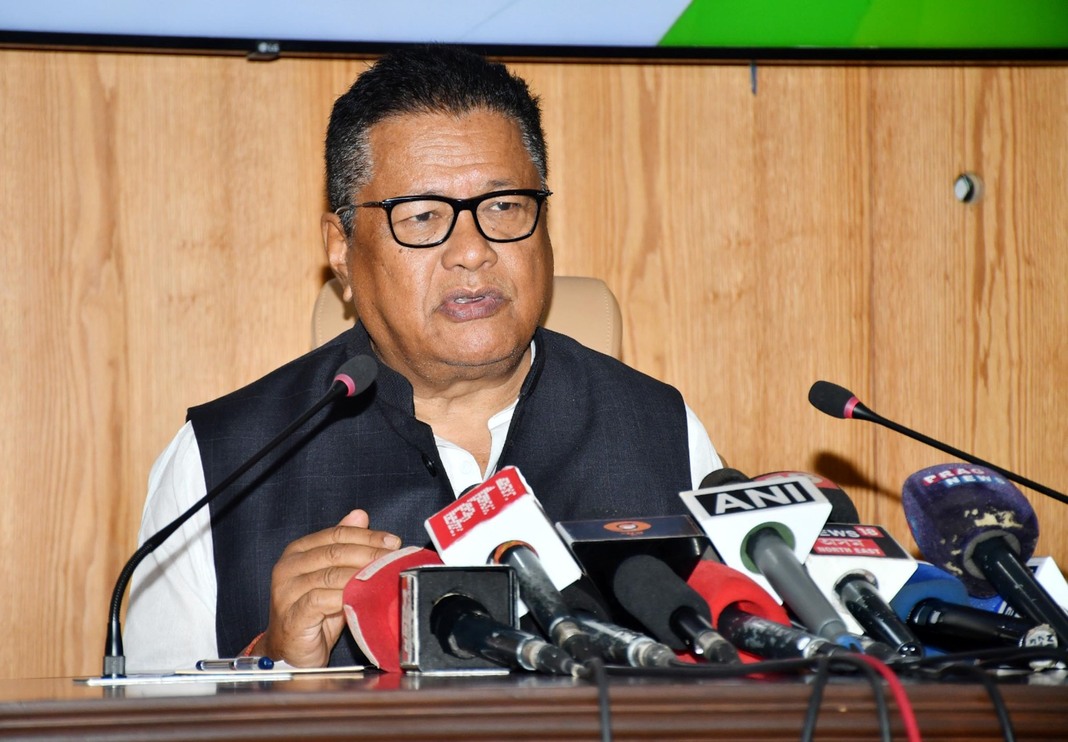New Delhi, Nov 27 : The GST rate rationalisation gave a “measurable” boost to consumption, and the Indian economy is on a stable footing to navigate risks and maintain growth momentum through the current fiscal, a finance ministry report said on Thursday.
The Finance Ministry’s Monthly Economic Review for October said that with inflationary pressures easing and recent tax reforms boosting household disposable incomes, the near-term consumption outlook appears increasingly positive.
Retail inflation has reached an all-time low in the current series, dropping to 0.25 per cent in October 2025, down from 1.44 per cent in September 2025.
The decline can largely be attributed to the complete impact of reduced GST rates, a favourable base effect, and significant falls in food inflation, the ministry said.
“The rationalisation of GST rates has provided a measurable boost to consumption, as reflected in the strengthening of high-frequency indicators, including higher e-way bill generation, record festive-season automobile sales, robust UPI transaction values, and a notable rise in tractor sales,” said the October Monthly Economic Review.
It said that these developments point to broad-based improvements in demand conditions across both urban and rural segments.
“The full impact of GST rationalisation on spending behaviour would become more evident over the next two quarters,” it added.
Effective September 22, the GST rates on about 375 items were slashed, making mass consumption items cheaper. Also, GST rates of 5, 12, 18, and 28 per cent have been clubbed into two rates of 5 per cent and 18 per cent, resulting in a reduced price of 99 per cent of daily use items.
The finance ministry report said the external environment remains characterised by elevated trade policy uncertainty, though global pressures have moderated relative to earlier peaks.
With regard to growth prospects, it said that various independent economic assessments place real GDP growth for Q2 FY26 in the range of 7–7.5 per cent, indicating continued strength in underlying economic activity.
Overall, the economy enters the second half of FY26 on a stable footing, anchored by well-contained inflation, resilient domestic demand and supportive policy dynamics, even as global uncertainties warrant continued vigilance, it added.
The National Statistics Office (NSO) is scheduled to release the Q2 (July-September) GDP growth data on November 28. Economic growth was at a 5-quarter high of 7.8 per cent in Q1.
The finance ministry report further said that global uncertainties — including shifting trade policies, geopolitical frictions, and financial market volatility — pose potential headwinds to exports, capital flows, and investor sentiment.
“Notwithstanding these challenges, the confluence of well-anchored inflation expectations, sustained public capital expenditure, and firming rural and urban demand places the economy on a stable footing, positioning it to navigate emerging risks and preserve its growth momentum through the remainder of FY26,” said the Monthly Economic Review.
The report said that corporate performance remained healthy during the month, with sustained profitability and stable balance sheets. Domestic financial markets continue to draw strength from firm institutional participation.
The report called for structural reforms to sustain and accelerate job creation in the economy.
In a bid to reform the labour markets, the Government of India has implemented 4 Labour Codes: the Code on Wages, 2019; the Industrial Relations Code, 2020; the Code on Social Security, 2020; and the Occupational Safety, Health and Working Conditions Code, 2020, streamlining 29 prevailing labour laws.
This historic move modernises labour regulations, moving beyond colonial-era structures, improves workers’ welfare, and aligns the labour ecosystem with the changing world of work. It lays the groundwork for a future-ready workforce and stronger, resilient industries, supporting labour reforms for Viksit Bharat @ 2047, the report added. (PTI)




